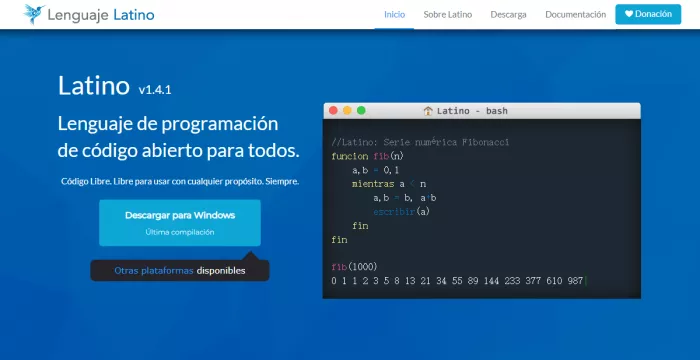Although the group of non-native English developers has been quite large, language has inevitably become an insurmountable threshold in front of many localization developers Take primitivo ROM á n Montero as an example. When he studied at the Higher Institute of technology in tepeaca, Mexico, he was trapped in English and dragged down his learning of programming language. After all, the logic of most well-known programming languages (such as Python) is based on English vocabulary and grammar (such as conditional judgment statements such as "while" or "if not").

(from: lenguaje Latino official website)
Not to mention many popular programming learning resources, including stack exchange, are based on English. In an interview with rest of world, Rom á n reluctantly said: as a beginner, he must constantly translate back and forth between his mother tongue and English, otherwise it is difficult to understand the original meaning of the code.
After graduating in 2007, he worked in different programming jobs for clients, including the Puebla state government, and even took on some projects that had to communicate in English, but he never felt comfortable during his work.

So in 2015, Rom á n decided to start a project to help future Spanish programmers, and finally launched the prototype of lenguaje Latino.
As an open source programming language based on Spanish, it is committed to making it easier for Spanish developers to master the principles of programming before learning other languages. For students who have just started and are addicted to programming, this tool can make a greater contribution to the society.

(GitHub portal)
Of course, the real world is still dominated by English, and ROM á n does not deny this. However, the emergence of lenguaje Latino still helps potential developers overcome this major language barrier in the programming industry.
According to a recent study by Spanish IT service company everis, 55% of Latin American companies said it was difficult to find suitable employees. On the other hand, experts predict that there will be nearly 10 million new IT job vacancies in the region by 2025.